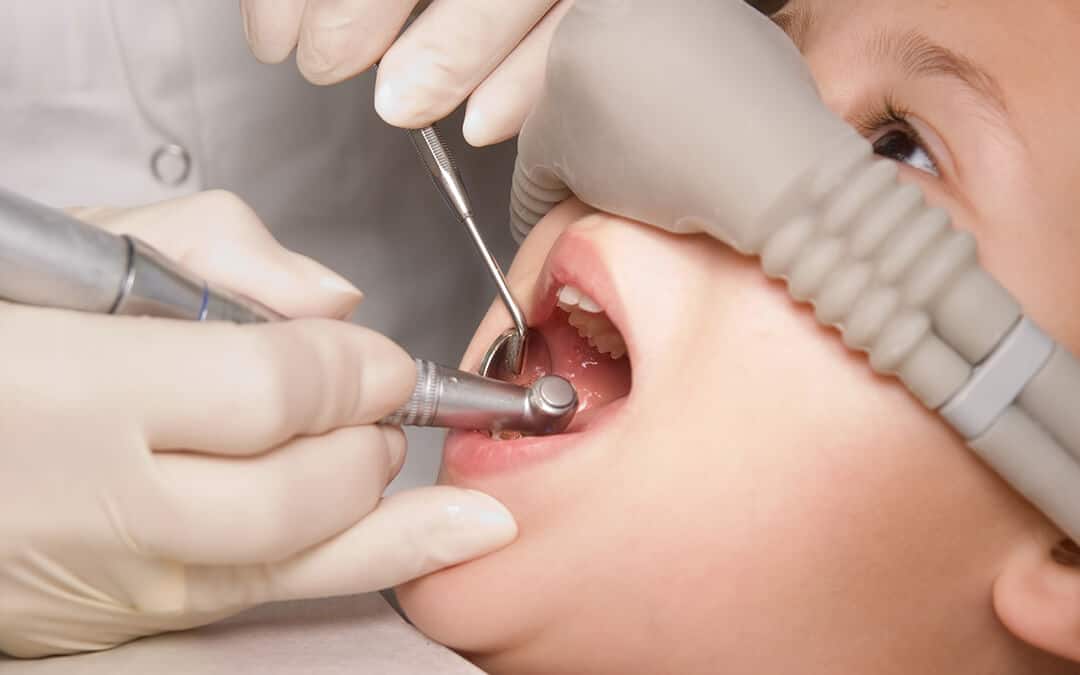When used for pain and anxiety relief, no drug is more popular in dentistry than nitrous oxide. For the patient, nitrous oxide poses little risk and comes with a two-minute onset and recovery period. For the dentist, there is the ease of administration and greater ease of unhindered working since the patient is comfortable and relaxed. But, as with any drug, there are precautions to keep in mind for the well-being of patients and staff. Here are 10 best practices1 for ensuring safety with the use of nitrous oxide in the dental office.

1. Daily Inspection
Before the first patient of the day, inspect all the system components. Everything from masks to reservoir bags needs to be checked for signs of wear, holes, or cracks. Anything damaged must be replaced immediately.
2. Make the Connections
After a complete inspection, connect the tubing to the mask. Next, turn on the vacuum pump and check that the flow rate is correct. Generally, manufacturers recommend a flow rate of up to 45 liters per minute.
3. Pick a Proper Fit
There are many different sizes of masks, from pediatric all the way up to large adult sizes. The mask needs to properly fit the patient. While the patient has the mask on, make sure that the reservoir bag isn’t over or underinflating. This should be done before nitrous oxide is given, while the patient is still breathing oxygen.

4. Limit Chatter
It is important to limit patient talking as much as possible during the administration of nitrous oxide. Nose breathing should be encouraged. This lessens staff exposure to nitrous oxide.
5. Continuous Monitoring
It is essential to provide continual monitoring of a patient receiving nitrous oxide. The reservoir bag needs to be observed for changes in tidal volume. The flow rate of the vacuum pump should also be checked. Patient consciousness can be monitored by asking simple questions.
6. Post-Procedure Oxygen
To flush any residual nitrous oxide from the patient’s system, give the patient pure oxygen for five minutes prior to removing the mask.
7. Ensure Staff Safety
Semi-annually, staff, especially those who work with nitrous oxide delivery, should be checked for exposure. This can be done in two ways: Staff can be asked to wear a badge that measures personal dosimetry, or an infrared spectrophotometer can be placed in the room.
8. Scavenging Systems for Safety
Each delivery system for nitrous oxide should be accompanied by a scavenging system. This should include a measuring device (such as a flow meter) that is easy to see and is maintained to ensure accuracy. Each workstation should be equipped with a vacuum pump with a capacity of up to 45 liters of air.
9. Check for Proper Ventilation
Vacuum and exhaust fumes should be vented outside away from any fresh-air intake vents. General ventilation should also be monitored, ensuring good room-air mixing. Failure to do so can be linked with adverse effects for personnel exposed to nitrous oxide for several hours per week.
10. Test for Leaks
Every time the system is turned on, the pressure connections should be tested for leaks. The connectors should also be checked when a gas cylinder is changed. Any high-pressure connections should be tested quarterly at a minimum. The testing can be done by applying a soap solution to the lines and connectors. A portable infrared spectrophotometer can also be used to test any connections.
Learn more about CalOx’s nitrous oxide gas for dental offices, or contact us today.
